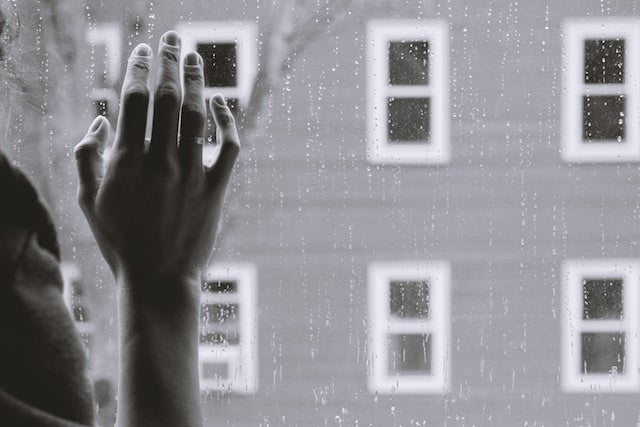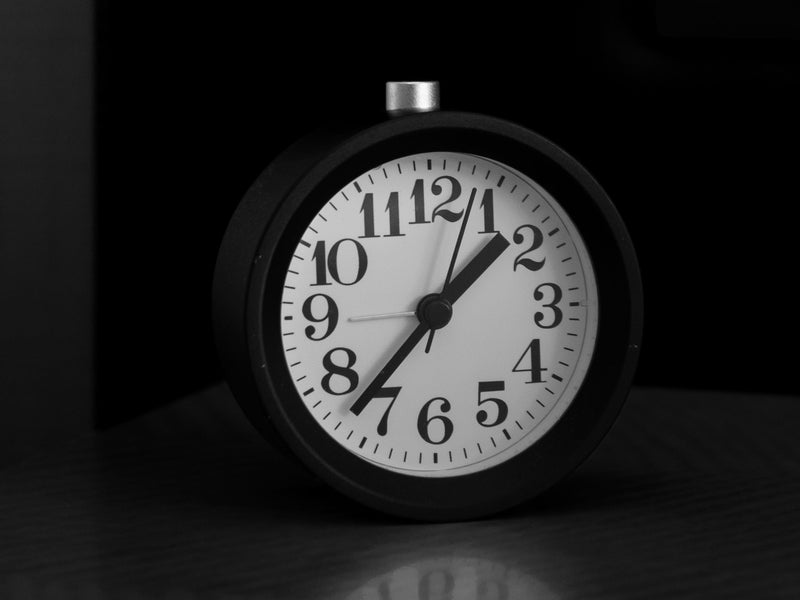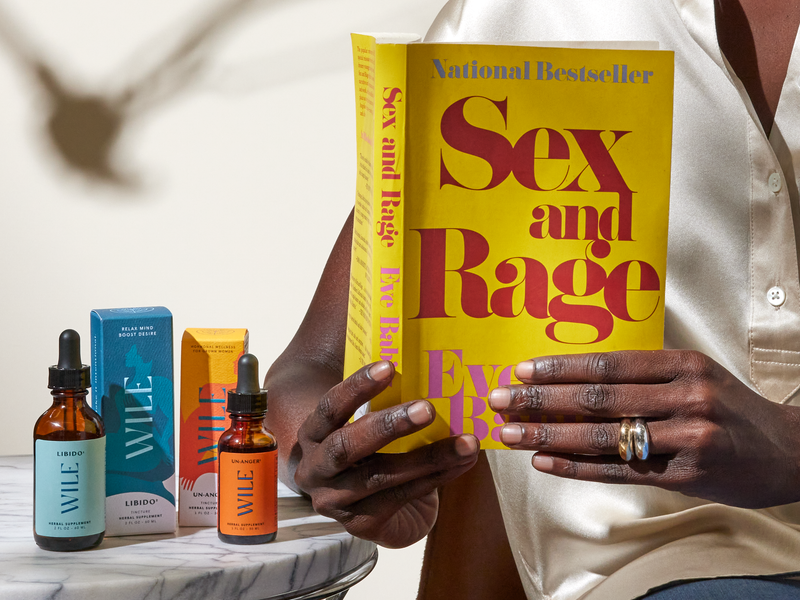American women over 40 are the world’s largest market for antidepressants on earth. Note, however, a few countries are bigger antidepressant takers per capita. (Canada and Iceland, we need to talk.)
According to the National Center for Health Statistics’ most recent data tracking, 2015-18:
20% of women ages 40-59
25% women age 60+
Used antidepressants in the last 30 days.
Compare that to:
10% of women ages 18-35
Or compare to our male peers:
8.4% of men 40-59
12.8% of men 60+
These gender-based statistics may be due in part to women’s willingness to seek help. But either way, it’s a big number. And antidepressants are sometimes called “the first line of defense” for depression, often used in this country before talk therapy or other therapeutic interventions.
Our question is, why?
Is it actually hormonal?
Depression is common around menopause. (Reminder: Menopause is the day when a woman has not had a period for a consecutive 12 months.) The average age for menopause in the US is 51. Studies have found depression incidence can be 2-4x higher in this age range, and higher still if there’s been a major depressive episode previously in a woman’s life.
Studies of perimenopausal symptoms specifically often show significant numbers of women reporting low mood, tearful incidents, anxiety, sleeplessness and other indications that dovetail with depression.
The most critical time period seems to be the two years before and after the last period, which would typically be ages 49-53, according to an expert on hormones and the brain, Peter Schmidt at the National Institute of Mental Health.
One of the reasons may be hormonal changes. Decreasing estrogen has a direct effect on mood, as the brain has a high concentration of estrogen receptors.
Schmidt, chief of the Behavioral Endocrinology at NIMH’s Intramural Research program told the Wall Street Journal that this menopausal-era depression is distinct due to “intense anxiety, irritability and sleep problems along with the more typical sadness and loss of pleasure in once-enjoyed activities.”
The complex connection with sleep (or lack thereof)
Hormonal shifts frequently disturb sleep and there’s a noted linkage between poor sleep and depression. Johns Hopkins states there is a 10x higher risk of depression for those with insomnia. And women in Wile quizzes and surveys report sleep issues as a top-four issue in this life phase, starting well before menopause.
“Getting slapped on antidepressants”
Some doctors believe the uptick in antidepressant use is simply because hormone replacement therapy is just beginning to be accepted and understood by the medical community. Many doctors and women can be reluctant to use hormones, unable to, or may know little about it.
There’s more than a little whiff of the old idea of hysteria. If a woman is suffering from something, maybe it’s all in her head?
“A lot of women, unfortunately, who are going to their doctors because of hot flashes and night sweats are getting slapped on antidepressants,” said Stephanie Faubion, medical director of the North American Menopause Society and the director of Mayo Clinic Women’s Health, also quoted in the WSJ.
While HRT is becoming more common, there are natural alternatives like our Wile Perimenopause Support or Women's Stress supplements. There are new, estrogen-based therapies being developed specifically for mood.
But in the meantime, it’s expedient to simply write a script for an antidepressant. They’re so normalized in this country and provide that quick fix our culture demands.
It’s worth noting that another “quick fix” has had a similar boost: alcohol. Drinking culture around women has escalated (insert mommy juice joke here). Alcohol use disorders for women in this age range have skyrocketed. Alcohol-related deaths for women 45-54 and 55-64 are up by 85% from 1999-2017, according to the National Institutes of Health.
Without shaming anyone, we do have to ask: Why must we be medicated or self-medicated to get through being an older woman in America?
Beyond hormones: The role of inequity & expectations
It seems likely there’s some hormonal component to all this. But then, there’s the trickier question of women’s stress load, and the real and emotional labor we’ve normalized as “women’s work” in this country.
In the Seattle Women’s Health Study, women identified the most challenging aspects of midlife as:
- changing family relationships
- re-balancing work/personal life
- re-discovering self
- securing enough resources
- coping with multiple co-occurring stressors (most often cited included divorce/breaking up with a partner, health problems of self, and death of parents).
To quote the study itself: “Few women mentioned menopause as the most challenging aspect of their lives.”
Work, work, work
And we still do more at home. Even as women overtook men in the college-educated labor force by a slim 50.7% in 2022, according to Pew Research.
How is this changing the dynamics in the home? Not entirely.
U.S. women working outside the home at least 35 hours per week spend 1.1 more hours per day on unpaid household caretaking than men do.
That’s according to a 2020 study by Oxfam and the Institute for Women’s Policy Research.
That’s the equivalent of 50 eight-hour work days per year, which adds up to about $77.9B in GDP according to the study’s math. And that’s just for women working outside the home.
And the leisure gap between men and women isn’t just a mom thing. Men have more leisure time than women, whether there are kids in the house or not, and at any age, according to Pew Research.
There are also plenty of takes on how women’s “leisure” is different than men’s as well, often more centered on home activities or involving coordination, planning and the like. Anne Helen Peterson is one author who writes extensively on this.
The glass ceiling, version 2000s
And women’s careers can stall out before reaching the highest levels at this same timeframe. Women’s advances to the very top leadership roles stalled out in the last 20 years and a significant pay gap exists between the highest level male and female leaders.
Only 25% of college-educated women working full-time earn above the median of similarly educated and employed men.****
And it’s lonely at the very top:
Only 6% of these women achieve what the top 20% of male earners make.
Only 3% make as much as the top 10% of men.
Depressed yet? Deep breaths, we’re almost there!
It’s a white woman thing
While it’s been shown that black and brown women face much more allostatic and overall stress, white women are overwhelmingly the market for these drugs. Interestingly, Asian women who report the least perimenopausal issues, use the
The National Health & Nutrition Examination survey found that amongst women:
22.3% of white women had used antidepressants in the past 30 days, compared to 10% of Black women, 8.9% of Latina women, and 3.4% of Asian women.
Cultural stigma, culturally appropriate tools, access to care and more could be factors here. But so could community support, cultural expectations and more. There’s a lot to research here but the numbers needed to be included for a fuller picture.
But are the antidepressants working?
With friends talking Zoloft between catching up on elder care, kids, careers, flatlining and how the Pilates isn’t enough anymore — is it any wonder we turn to anti-depressants at such a high rate?
We need help!
Unfortunately, it’s not clear that the results are always there.
Important note: We are not encouraging any woman not to seek help, nor are we encouraging anyone not to take these drugs. Simply looking deeper at the information and asking questions.
Again, researchers analyzed data from the U.S. National Center for Health Statistics’ survey from 2005 to 2015.
They looked at all 17.5 million men and women who were newly diagnosed with depression in each of those years, with 58% going on an antidepressant (no specific antidepressants were specified).
The group looked like this: nearly 90% white, 63% middle to upper class, two-thirds female. Average age: 48 (And so far, this all checks out).
After two years, those taking antidepressants reported feeling no better physically or mentally versus those who didn’t take the antidepressants.
Other studies cite a limited difference on patients taking a placebo vs a prescription, and indicate that this may be particularly true for milder depression or mood disorders. The results appear to be more dramatic for serious depressive episodes.
So while people scoff at the placebo effect, it is very real. And nearly as effective for most non-serious mood issues. Which indicates both the power of human belief and the mind, and perhaps the ability to seek other sources.
There are also studies showing how third-party trials not conducted by pharmaceutical companies have less dramatic results than those reported by pharmaceutical companies.
The role of marketing
Women doing more is normalized. So are antidepressants, along with putting women on other medications. It started in the 1960s, with Valium. That only sped up when the FDA allowed pharmaceutical advertising targeting consumers in 1983. Our generation grew up on “ask your doctor” ads and Prozac Nation. The spend keeps growing, and the world changes and gets more isolating and complex.
Pharmaceutical companies spend billions on advertising for antidepressants. They’re also involved in research: 80% of meta-analyses of studies—the “evidence” often referred to by researchers—have ties to pharmaceutical companies. One-third of the 185 meta-analyses examined in one study published in the Journal of Clinical Epidemiology was actually written by pharmaceutical company employees.
“Meta-analyses are at the top of the evidence pyramid.” Erick Turner, a professor of psychiatry at Oregon Health & Science University, told Scientific American “Industry influence is just massive.”
So why are we ok with It?
AKA: Getting through this thing we call life.
As a generation, we are drinking more alcohol, taking more antidepressants, consuming more weed and generally medicating or self-medicating as a way to get through endless to-do lists and existential ennui, on top of everything else we’ve outlined in this article.
Why?
Because we don’t have the time or energy to truly take care of ourselves.
Because our overfunctioning serves those around us—family, partners, bosses, clients—and they have no incentive to change the status quo.
Because we were conditioned to do it for fear of looking bitchy, disagreeable, unlikable, selfish, like a bad mom—put your expectation here or email us and share your own story.
Because it’s “easier to do it myself” than it is
Because doctors put us on an antidepressant and it becomes the default—which is the explanation some give of why the rate for women 60+ is so high.
Because therapists are overbooked and often out-of-network.
We are not condemning antidepressant use by any means. For many people, it’s necessary. However, we do question a world in which women need to be medicated in order to survive our lives, despite the privileges that we have.
Why We Like Herbs
Herbal and adaptogenic support for mood has been in use for centuries. Herbs like ashwagandha and kava have been used for centuries, as has St. John's wort and many more.
Some advantages of herbal support:
- not habit forming
- no "taper off" or downside when you stop taking them
- no detrimental effects on brain chemistry, weight or sexual side effects.
To be clear, we do not believe there is any silver bullet in pill or capsule form. We advocate talking to a doctor and licensed therapist in addition to other exploring other forms of beneficial therapies you can actually fit into your life: fish oil, nutritional changes, exercise, massage, spiritual practice, and other self care. That's another reason we created both tinctures for in-the-moment support and a targeted Wile Women's Stress capsule. That daily support addresses both hormonal mood support and situational stress.
We all deserve to feel better. We wish for every one to find the support they need in the ways that work for them.
REFERENCES:
Almohammed , Omar A., et al. Antidepressants and health-related quality of life (HRQoL) for patients with depression: Analysis of the medical expenditure panel survey from the United States, April 20, 2022 URL: https://doi.org/10.1371/journal.pone.0265928
Petersen, Andrea “Why So Many Women in Middle Age Are On Antidepressants” April 2, 2022 Wall Street Journal
Mozes, Alan, “In Long Run, Antidepressants Don’t Improve Quality of Life: Study” April 20, 2022 US News & World Report
Pew Research: “Women Now Outnumber Men in the US College Educated Workforce”. September 26, 2022
Hess, Cynthia, Ph.D.; Ahmed, M.Phil, Tanima; and Hayes, Jeff Ph.D. Providing Unpaid Household and Care Work in the United States: Uncovering Inequality. January 2020 Institute for Women’s Policy Research
Jacobson, Roni, Many Antidepressant Studies Found Tainted by Pharma Company Influence Scientific American, October 21, 2015
Khan, Arid and Brown, Walter A, “Antidepressants versus placebo in major depression: an overview” World Psychiatry, Oct 14, 2015
Gruzca, Richard A, et al. Trends in Adult Alcohol Use and Binge Drinking in the Early 21st-Century United States: A Meta-Analysis of 6 National Survey Series, Epub 2018 Aug 23 Alcohol Clin Exp Re . 2018 Oct;42(10):1939-1950. doi: 10.1111/acer.13859. Epub 2018 Aug 23.
Brody, Debra J, M.P.H., and Gu, Qiuping Gu, M.D., Ph.D. Antidepressant Use Among Adults: United States, 2015-2018 NCHS Data Brief No. 377, September 2020
Jacobs, Rose. “What’s Really Holding Women Back from Top Jobs?” University of Chicago News, Chicago Booth Review, Dec. 17, 2018
Ely, Robin J and Padavic, Irene “What’s Really Holding Women Back?” Harvard Business Review, March-April 2020
Johns Hopkins Medicine, “Depression and Sleep: Understanding the Connection.” Johns Hopkins medicine blog
Thomas, Annette Joan, Sullivan Mitchell, Ellen and Fugate Woods, Nancy, “The Challenges of Midlife Women: themes from the Seattle Midlife Women’s Health Study” Women’s Midlife Health
Image credit: Kristina Tripkovic via Unsplash
This article is intended for informational purposes and is not intended to replace a one-on-one medical consultation with a professional. Wile, Inc researches and shares information and advice from our own research and advisors. We encourage every woman to research, ask questions and speak to a trusted health care professional to make her own best decisions.




